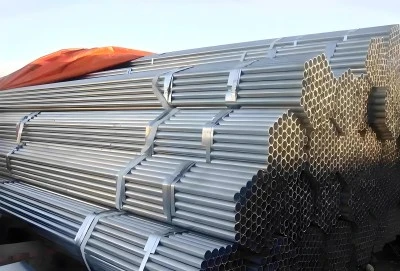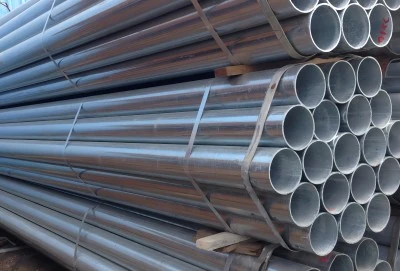The short answer is no, you should not use galvanized pipe for gas lines. Despite its corrosion-resistant zinc coating, it is not suitable for transporting natural gas or propane. The zinc coating can react with sulfur compounds in the gas, leading to flaking and potential blockages. This reaction also weakens the pipe structure over time, increasing the risk of leaks and failures. For gas transportation, industry professionals recommend using materials specifically designed for this purpose, such as black steel, stainless steel, or flexible corrugated stainless steel tubing (CSST).
|
|
|
Safety Concerns with Gas Piping
Corrosion risks of galvanized pipes in gas systems
When it comes to gas piping systems, corrosion is a serious concern that can't be overlooked. Galvanized pipes, while resistant to rust in water applications, face unique challenges when exposed to natural gas or propane. The zinc coating, which typically protects the steel from corrosion, can actually become a liability in gas systems.
The sulfur compounds present in natural gas and propane can react with the zinc coating, causing it to deteriorate over time. This process, known as sulfidation, leads to the formation of zinc sulfide scale. As this scale builds up, it can flake off and accumulate in the pipe, potentially causing blockages and reducing gas flow efficiency.
Moreover, as the protective zinc layer breaks down, it exposes the underlying steel to corrosive elements. This can result in pitting and weakening of the pipe structure, increasing the risk of leaks and failures. In high-pressure gas systems, such as those found in industrial settings, this corrosion risk becomes even more critical.
Potential leaks and gas exposure hazards
The use of galvanized pipes in gas systems poses significant safety risks due to the potential for leaks. As the pipes corrode and weaken, the likelihood of gas escaping through small cracks or joints increases. Gas leaks are extremely dangerous, as they can lead to fire, explosions, and asphyxiation.
In industrial environments, where large volumes of gas may be transported, even a small leak can quickly create a hazardous atmosphere. The odorless nature of some gases, like carbon monoxide, makes detection challenging without proper equipment. This underscores the importance of using appropriate materials that maintain their integrity over time.
Long-term durability issues with galvanized gas pipes
The long-term durability of galvanized pipes in gas systems is a major concern for engineers and facility managers. While these pipes might seem cost-effective initially, their performance degrades significantly over time when exposed to gas. This degradation not only compromises safety but also leads to increased maintenance costs and potential system downtime.
In industrial applications, where reliability and longevity are crucial, the use of galvanized pipes for gas transportation can lead to premature system failures. The need for frequent inspections, repairs, and eventual replacement of these pipes can disrupt operations and increase overall project costs. For large-scale engineering projects, especially in harsh environments like offshore platforms or chemical plants, the long-term implications of using unsuitable materials can be particularly severe.
Alternative Materials for Gas Lines
Stainless steel: A safer option for gas pipingStainless steel has emerged as a premier choice for gas piping in industrial and commercial applications. Its superior corrosion resistance, durability, and strength make it an ideal material for transporting natural gas and other potentially corrosive gases. Unlike galvanized pipes, stainless steel doesn't rely on a protective coating that can deteriorate over time. Instead, its inherent properties provide long-lasting protection against various forms of corrosion.
For large-scale projects, such as those in the oil and gas industry or offshore platforms, stainless steel piping offers several advantages. It can withstand high pressures and temperatures, making it suitable for a wide range of operating conditions. The material's resistance to sulfide stress cracking is particularly valuable in sour gas environments, common in many oil and gas fields.
Stainless steel's longevity and low maintenance requirements make it a cost-effective solution in the long run, despite its higher initial cost compared to some alternatives. This is especially important for projects in remote or hard-to-access locations, where frequent maintenance or replacement would be challenging and expensive.
CSST: Flexible gas piping for modern installations
Corrugated Stainless Steel Tubing (CSST) has revolutionized gas piping installations in recent years. This flexible, lightweight material offers significant advantages in terms of ease of installation and adaptability to complex layouts. For project managers and contractors working on large-scale construction or retrofit projects, CSST can significantly reduce installation time and labor costs.
CSST's flexibility allows it to be routed around obstacles and through tight spaces more easily than rigid piping. This characteristic is particularly valuable in industrial settings where space is at a premium or in retrofit projects where working around existing structures is necessary. The material's corrosion resistance and durability rival that of traditional stainless steel, ensuring long-term reliability.
However, it's important to note that proper installation of CSST is crucial to its performance and safety. Specialized fittings and installation techniques are required, and installers should be trained and certified in its use. For large projects, this may necessitate additional training or the use of specialized contractors.
Copper tubing: Pros and cons for gas line applications
Copper tubing presents another alternative for gas piping, though its use is more common in residential and light commercial applications rather than heavy industrial settings. Its main advantages include excellent corrosion resistance, ease of installation, and good heat conductivity. Copper is also known for its ability to withstand high pressures, making it suitable for various gas systems.
However, copper tubing has limitations that make it less ideal for large-scale industrial applications. It's generally more expensive than steel options, which can significantly impact project budgets in extensive installations. Copper is also softer than steel, making it more susceptible to physical damage, which can be a concern in industrial environments where pipes may be exposed to impacts or heavy loads.
For project managers considering copper, it's essential to weigh these factors against the specific requirements of the project. In some cases, such as in corrosive environments where stainless steel might be cost-prohibitive, copper could offer a viable middle ground between performance and cost.
Regulations on Gas Pipe Materials
Local building codes for gas piping materialsUnderstanding and adhering to local building codes is crucial for any gas piping project. These codes vary by region and can significantly impact material selection and installation methods. For project managers and engineers working on international projects, navigating these local regulations can be particularly challenging.
In many jurisdictions, building codes explicitly prohibit the use of galvanized pipes for gas lines due to the safety concerns discussed earlier. Instead, they often specify approved materials such as black steel, stainless steel, or CSST. Some codes may also include specific requirements for pipe thickness, joining methods, and pressure testing procedures.
It's important to consult with local authorities or certified inspectors early in the planning phase to ensure compliance. Non-compliance can lead to project delays, additional costs, and potentially dangerous installations. For large-scale projects, consider engaging a local expert or consultant familiar with regional regulations to guide material selection and installation practices.
Industry standards: ASME B31.8 for gas transmission
The American Society of Mechanical Engineers (ASME) B31.8 standard is a critical reference for gas transmission and distribution piping systems. This comprehensive standard covers the design, fabrication, installation, inspection, and testing of pipeline facilities used for the transportation of gas. It's widely recognized and adopted internationally, making it particularly relevant for global projects.
ASME B31.8 provides detailed guidelines on material selection, emphasizing the importance of using materials suitable for the specific gas being transported and the operating conditions. The standard addresses factors such as chemical composition, mechanical properties, and corrosion resistance of piping materials.
For project engineers and procurement managers, familiarity with ASME B31.8 is essential when specifying materials and designing gas piping systems. The standard's recommendations can help ensure the safety, reliability, and longevity of gas transmission systems, particularly in high-pressure or large-volume applications common in industrial settings.
EPA guidelines on gas pipe material selection
The Environmental Protection Agency (EPA) also plays a role in guiding material selection for gas piping, particularly concerning environmental impact and safety. While the EPA doesn't directly regulate gas piping materials, its guidelines on leak detection and repair (LDAR) programs influence material choices.
EPA recommendations often favor materials and systems that minimize the risk of gas leaks and emissions. This aligns with the growing focus on environmental responsibility and sustainability in industrial projects. Materials that offer superior leak resistance and long-term durability, such as high-quality stainless steel or properly installed CSST, are often preferred from an environmental standpoint.
For projects in environmentally sensitive areas or those subject to strict emissions regulations, considering EPA guidelines in material selection can help ensure compliance and minimize environmental impact. This proactive approach can also help prevent future issues with regulatory bodies and support corporate sustainability goals.
In conclusion, the use of galvanized pipe for gas transportation is not recommended due to significant safety and durability concerns. For industrial and large-scale projects, materials like stainless steel, CSST, or in some cases, copper, offer superior performance and safety. When selecting gas piping materials, it's crucial to consider local building codes, industry standards like ASME B31.8, and environmental guidelines. Prioritizing the right material choice ensures long-term safety, efficiency, and compliance in gas piping systems, ultimately contributing to the success and sustainability of your projects.
Galvanized Pipe For Sale
Hebei Longma Group offers high-quality pipes suitable for various industrial applications, though not for gas transportation. Our state-of-the-art production facilities, imported from Germany, ensure top-notch quality. With a professional team of over 300 employees, including 60+ technical experts, we guarantee expert craftsmanship. Our comprehensive testing facilities, including ultrasonic flaw detectors and X-ray equipment, ensure product integrity. We pride ourselves on fast delivery, with standard thickness pipes ready in just 7 days. Backed by complete certifications like API 5L and ISO 9001, our products meet international standards. Thanks to our efficient production model and stable raw material partnerships, we offer competitive pricing without compromising quality. For inquiries about our galvanized pipes and other steel products, contact us at info@longma-group.com.














